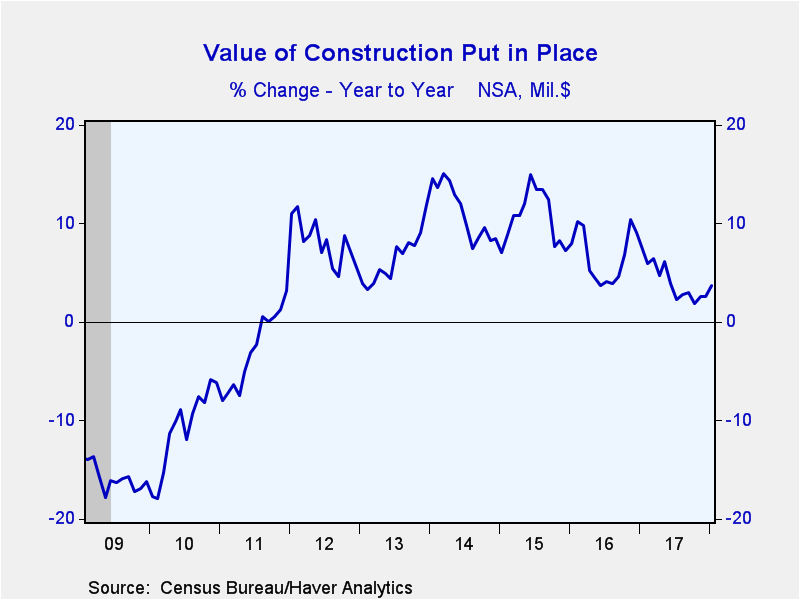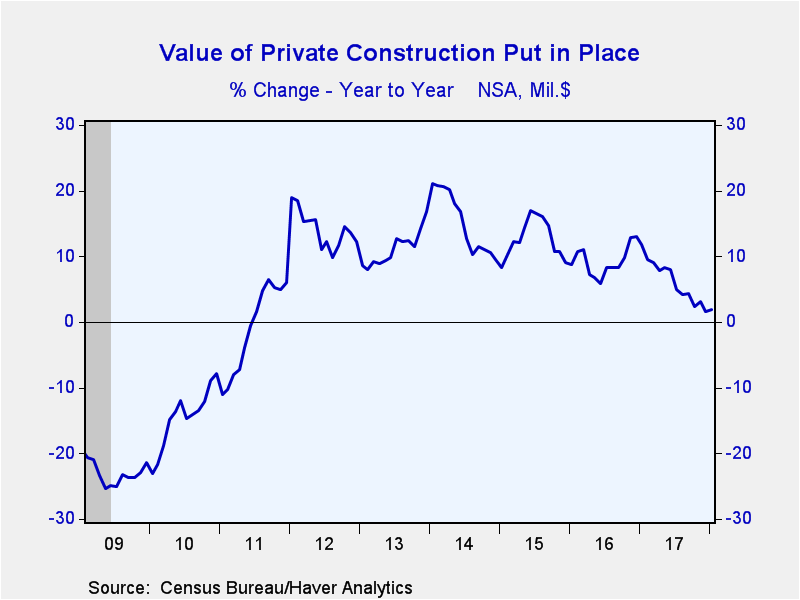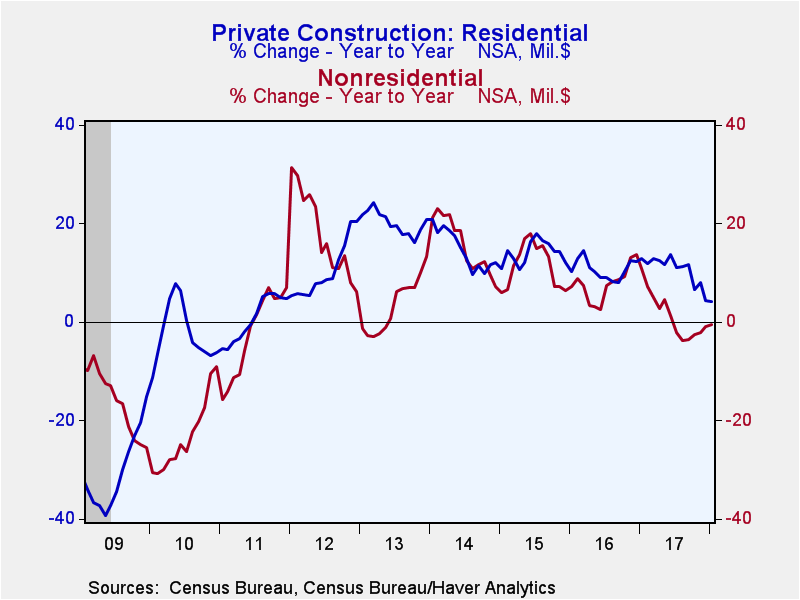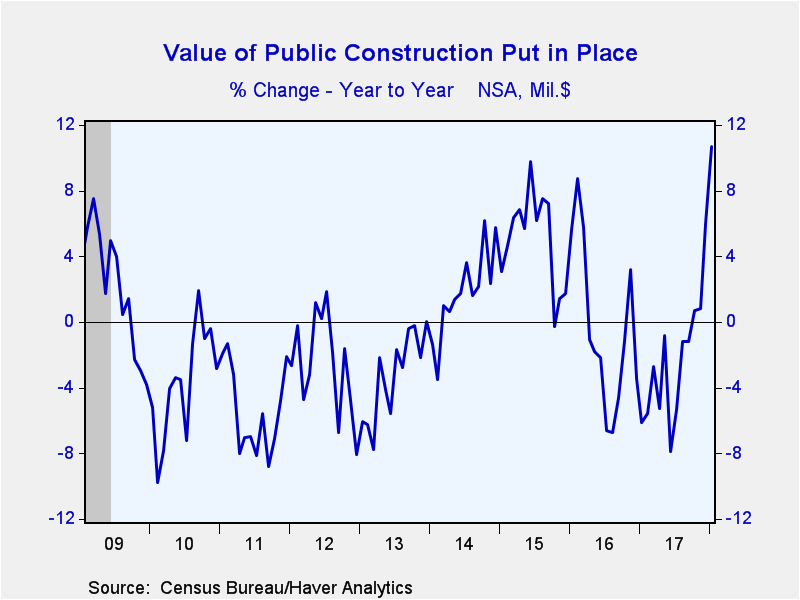 Global| Mar 01 2018
Global| Mar 01 2018U.S. Construction Spending Unchanged; Components Mixed
Summary
The value of construction put-in-place was unchanged during January (3.2% y/y) following upwardly revised increases of 1.2% and 0.8% in November and December (these were previously reported as 0.6% and 0.7% respectively). A 0.2% gain [...]
The value of construction put-in-place was unchanged during January (3.2% y/y) following upwardly revised increases of 1.2% and 0.8% in November and December (these were previously reported as 0.6% and 0.7% respectively). A 0.2% gain in activity had been expected in the Action Economics Forecast Survey.
Private sector building activity declined 0.5% (+1.7% y/y) with growth in residential building activity of 0.3% (4.2% y/y) offset by a 1.5% drop (-1.1% y/y) in nonresidential construction. In the residential space, single-family housing activity rose 0.6% (8.8% y/y) however, multi-family construction fell 1.3% (-2.4% y/y). The value of improvements edged up 0.2% (0.1% y/y). The two largest nonresidential sectors--power and commercial construction--dropped 6.2% (-8.7% y/y) and 2.7% (+5.4% y/y) respectively. Meanwhile, factory construction, the third largest sector, rose 1.2%, though was down 9.7% in the year ending January 2018. Construction of office space, the fourth largest sector, declined 1.0% (-4.9% y/y).
The value of public sector building activity rose 1.8% (8.2% y/y). Highway and street, the largest component of public sector construction, jumped 4.3% (3.8% y/y); educational, the second largest, increased 2.1% (7.1% y/y). Public construction of residential housing--a very small sector--dropped 4.3%, but was still up 10.3% from a year ago.
The construction spending figures, some of which date back to 1946, are in Haver's USECON database and the expectations reading can be found in the AS1REPNA database.
| Construction Put in Place (SA, %) | Jan | Dec | Nov | Jan Y/Y | 2017 | 2016 | 2015 |
|---|---|---|---|---|---|---|---|
| Total | 0.0 | 0.8 | 1.2 | 3.2 | 3.8 | 6.5 | 10.7 |
| Private | -0.5 | 0.6 | 1.5 | 1.7 | 5.8 | 9.2 | 12.9 |
| Residential | 0.3 | -0.5 | 1.2 | 4.2 | 10.6 | 10.5 | 14.2 |
| Nonresidential | -1.5 | 1.8 | 1.7 | -1.1 | 0.6 | 7.7 | 11.5 |
| Public | 1.8 | 1.8 | 0.2 | 8.2 | -2.5 | -1.2 | 5.1 |
Gerald D. Cohen
AuthorMore in Author Profile »Gerald Cohen provides strategic vision and leadership of the translational economic research and policy initiatives at the Kenan Institute of Private Enterprise.
He has worked in both the public and private sectors focusing on the intersection between financial markets and economic fundamentals. He was a Senior Economist at Haver Analytics from January 2019 to February 2021. During the Obama Administration Gerald was Deputy Assistant Secretary for Macroeconomic Analysis at the U.S. Department of Treasury where he helped formulate and evaluate the impact of policy proposals on the U.S. economy. Prior to Treasury, he co-managed a global macro fund at Ziff Brothers Investments.
Gerald holds a bachelor’s of science from the Massachusetts Institute of Technology and a Ph.D. in Economics from Harvard University and is a contributing author to 30-Second Money as well as a co-author of Political Cycles and the Macroeconomy.









